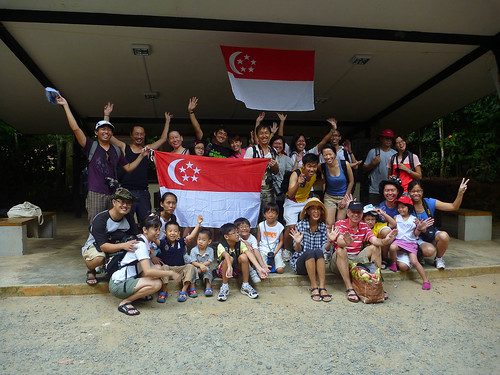
Today, the Naked Hermit Crabs celebrated National Day with a guided tour on the Chek Jawa boardwalk.
I arrived at Changi a little early, so I decided to spend some time exploring a small stretch of coast close to Changi Point Ferry Terminal.
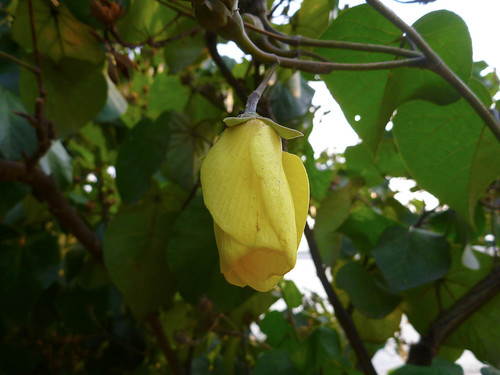
Some of the sea hibiscus (Talipariti tiliaceum) were flowering; the flowers only fully open at around 9 a.m.
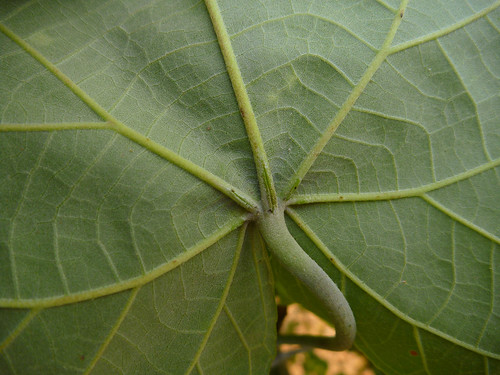
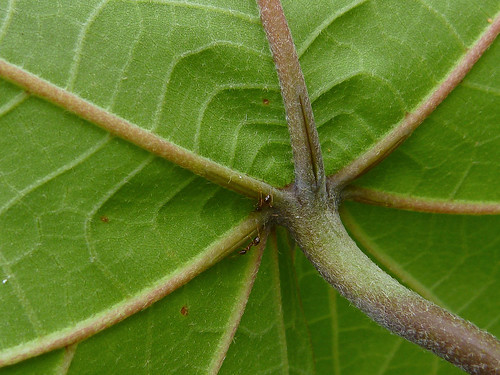
Sweet secretions from these slits in the leaf veins attract ants. I always share how the aggressive weaver ants (Oecophylla smaragdina) are fond of building their nests in sea hibiscus, and do an excellent job at keeping herbivores away from the plant.

I found this nymph of a cotton stainer bug (Dysdercus decussatus) on a sea hibiscus fruit.

Further down the boardwalk, the weaver ants were hard at work, processing a piece of prawn.
There were plenty of birds; parakeets (Psittacula sp.) screeched as they flew overhead, while I saw some scaly breasted munia (Lonchura punctulata) perched among the long grass. A small group of olive-backed sunbirds (Cinnyris jugularis) with their high-pitched chirps chased each other through the trees.
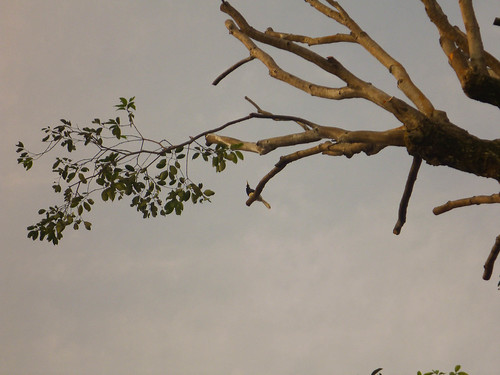

I was thrilled to see 4 Oriental pied hornbills (Anthracoceros albirostris) approach and land in a nearby tree. Unlike most other encounters I've had with hornbills, these were completely silent.
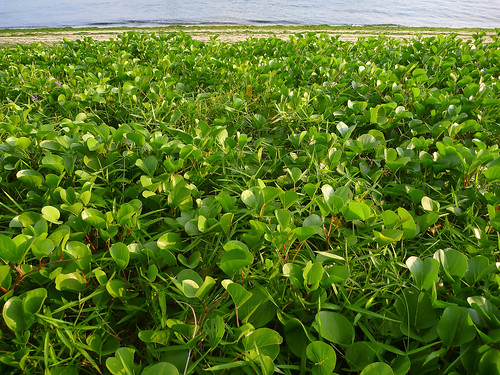

There was thick luxuriant growth of seashore morning glory (Ipomoea pes-caprae) on the high shore.
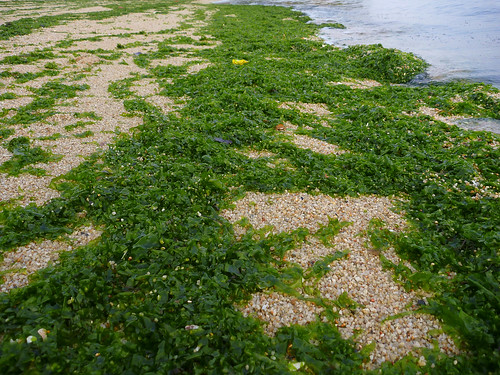
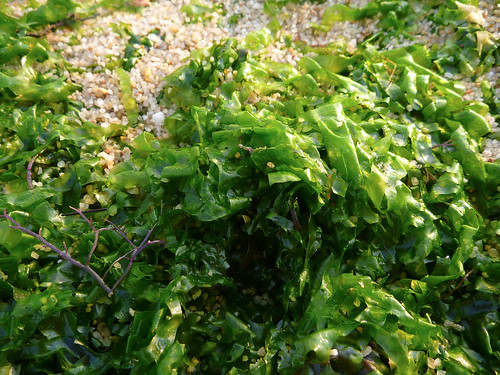
The nearby beach was carpeted with the algae known as sea lettuce (Ulva sp.), washed up with the incoming tide.
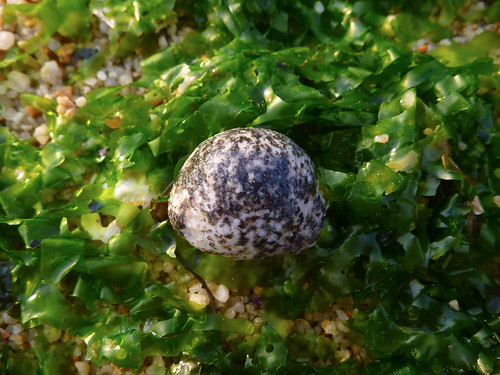
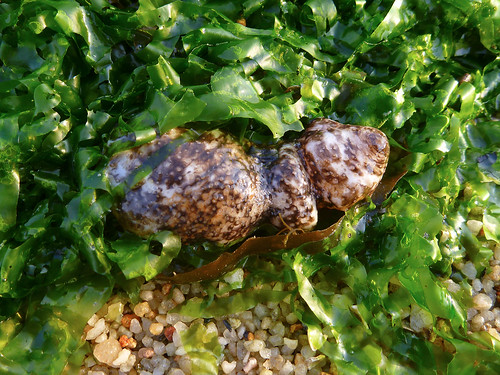
Some small animals had gotten stranded with the seaweed too. I found a couple of ball sea cucumbers (Phyllophorus sp.).
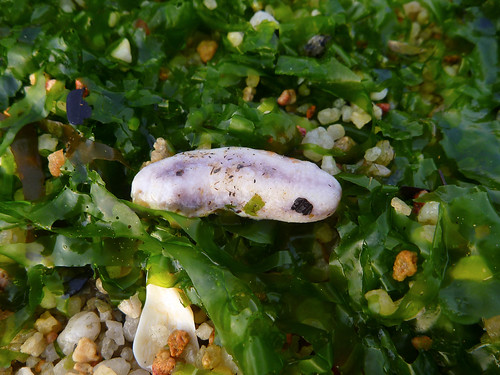
I also saw a rather stressed purple sea cucumber (F. Cucumariidae). These were all returned to deeper water, where they will hopefully manage to avoid getting washed up onto the beach again.
I returned to the ferry terminal and joined the others. We often take a few moments to look out for fishes. There were small groups of striped-nose halfbeak (Zenarchopterus buffonis) zipping about near the surface, juvenile mullet (F. Mugilidae) swimming about actively in close formation, and a huge shoal of Kops' glass perchlet (Ambassis kopsii) just lounging in the water.
As we arrived on Pulau Ubin, I stopped to admire the white-bellied sea eagles (Haliaeetus leucogaster) and brahminy kites (Haliastur indus) that were soaring just off the island.
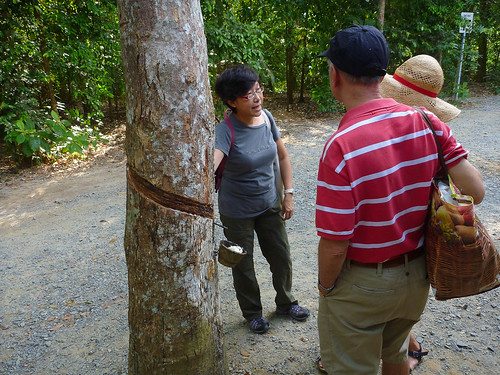
We arrived at Chek Jawa, where Ley Kun promptly shared with some of our visitors about rubber trees (Hevea brasiliensis) and the rubber industry in 19th century Malaya.
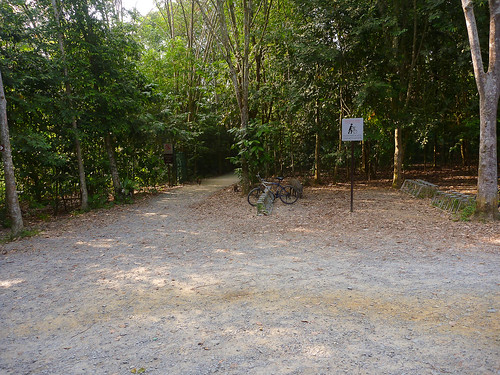
The resident wild boar (Sus scrofa vittatus) soon came trotting out of the forest.
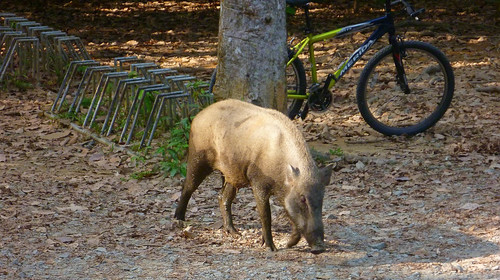
They had clearly just gone for a cooling dip in some mud. I like how this sow has a mud stain on her flank the Nike symbol that looks like the Nike symbol.
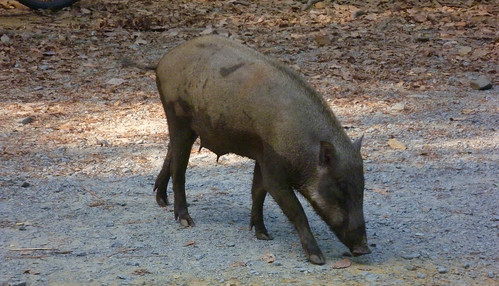
The wild boar at Chek Jawa appear to comprise a family group, led by one large adult sow. I believe that this was one of the piglets from last year's litter, who has since grown up and now has young of her own. She's usually seen in the company of her mother and one of her sisters, as well as the newest litter.
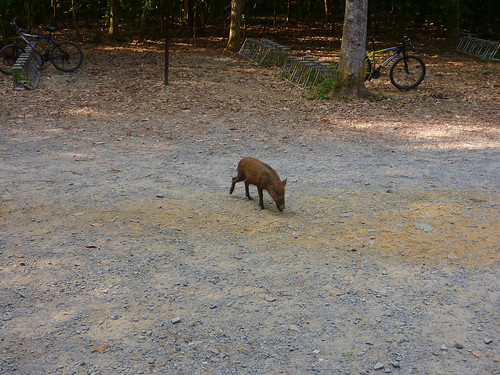

The piglets are now a little larger, and their watermelon stripes are starting to fade. We're not sure just exactly how many piglets are there, and which sow they belong to.

The matriarch (who is probably a grandmother) wasn't with the rest of the family. I wonder where she is. We also haven't seen the boars in quite some time, although the piglets clearly indicate that they're out there somewhere. Perhaps the boars are still more wary around humans, and like the minibus drivers have shared in the past, the males don't get fed as they are more likely to turn aggressive.
We learnt from the Information Kiosk that the durian trees (Durio zibethinus) had flowered around 3 weeks ago! Which means that we could probably expect to see the trees fruiting sometime in November or December.
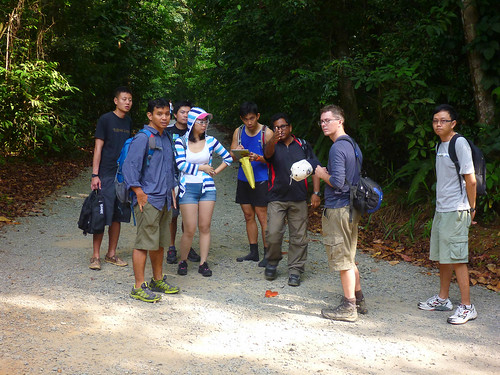
A small group from International Coastal Cleanup Singapore (ICCS) are also here at Chek Jawa for a recce trip, in preparation for the annual cleanup session in September.
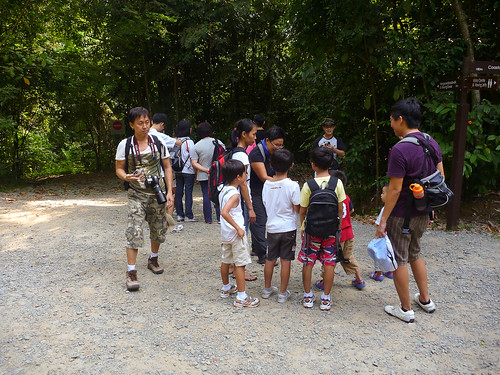
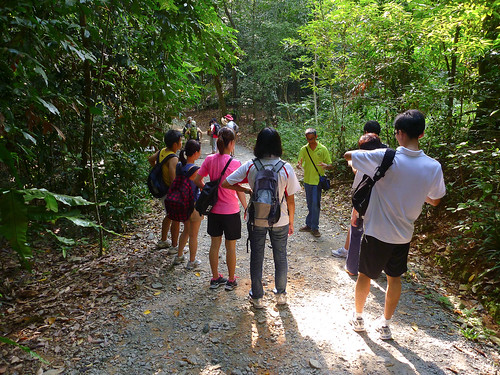
After a quick briefing, our visitors set off, led by Sankar, Pei Yan, Chay Hoon and Ria.
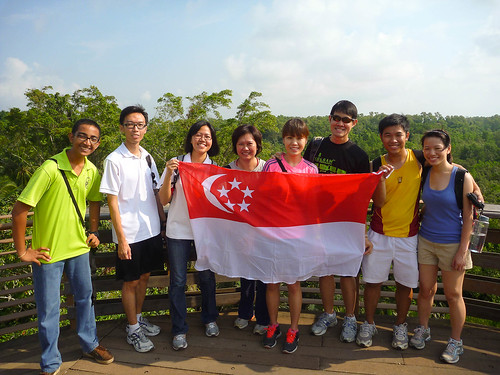
Ria brought along the Singapore flag, and our enthusiastic visitors gamely posed for photos on the Jejawi Tower.
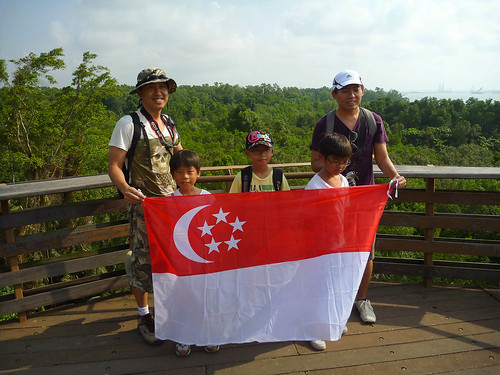

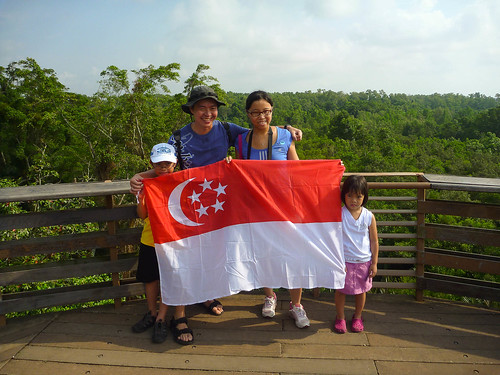
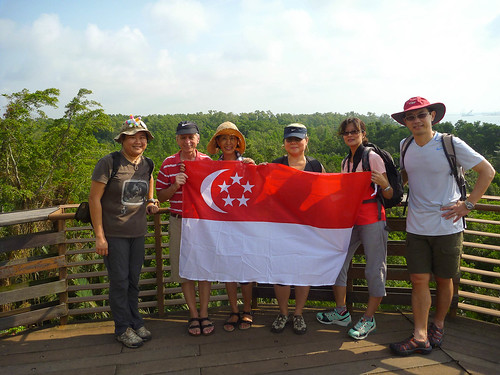
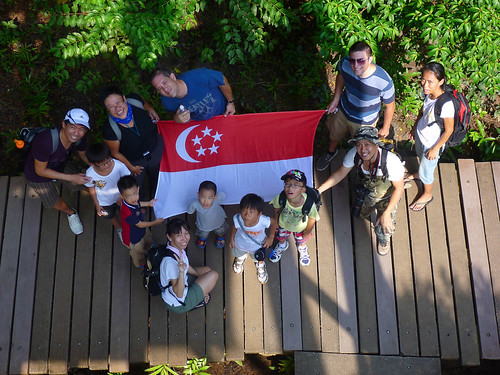
Here's Ria's group at the foot of the Jejawi Tower.
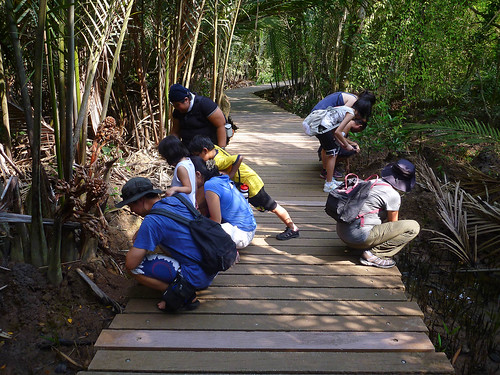
Everyone has lots of fun trying to spot crabs and mudskippers in the mangroves. Even the giant mudskipper (Periophthalmodon schlosseri) proved to be a challenge to spot among the mangrove roots.

"There, do you see the mudskipper?"
I shared with some of the visitors about the tree-climbing crabs (Episesarma spp.) commonly seen in the mangroves, and as luck would have it, we saw several Singapore tree-climbing crabs (Episesarma singaporense), identified by the distinctive red claws.

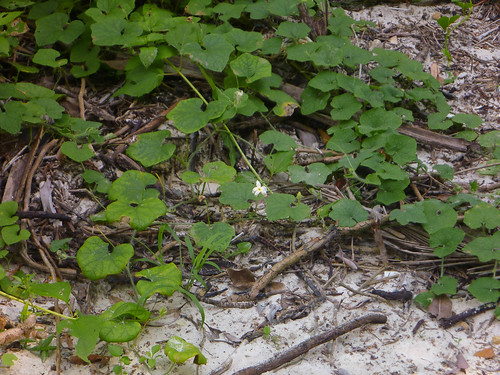
We found this plant with white flowers and bright red fruits that reminded us of cherry tomatoes. I wonder what it is.

Where the mangroves began to thin out, large groups of porcelain fiddler crabs (Uca annulipes) were seen. Everyone was amused and entertained by the frantic waving of claws and little skirmishes as males competed with each other for females.

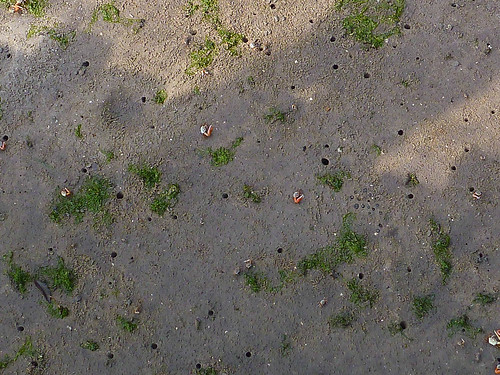

Closer to the mudflat, the orange fiddler crabs (Uca vocans) dominated the shore.
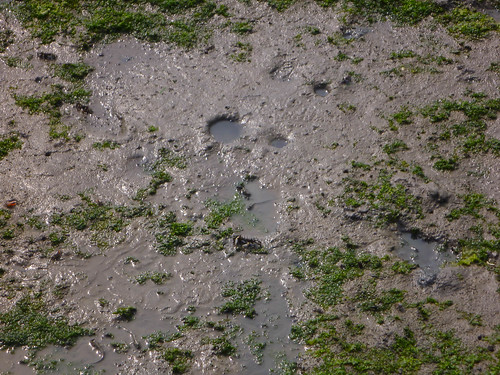
Bearded mudskippers (Scartelaos histophorus) and a blue-spotted mudskipper (Boleophthalmus boddarti) were seen on the mudflat, along with several crabs that appeared to be somewhat larger than fiddler crabs. At that time, I identified them as possibly being ghost crabs (Ocypode spp.), although I now think that they're more likely to be sentinel crabs (Macrophthalmus spp.).
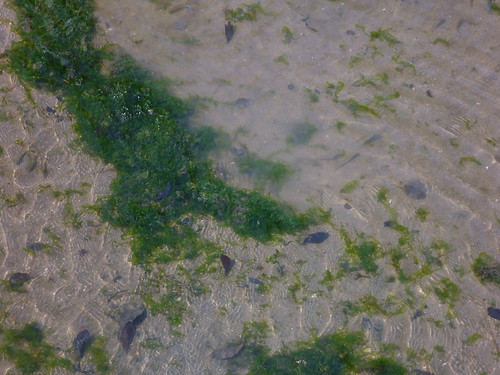
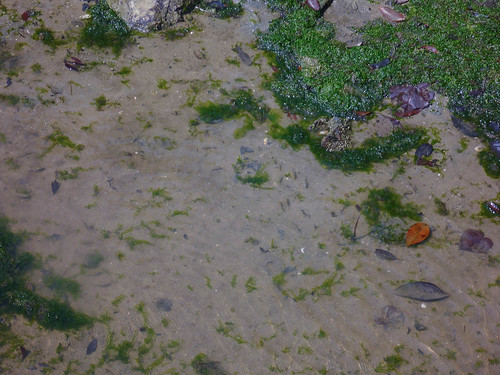
Closer to the water's edge, as if welcoming the incoming tide, several gold-spotted mudskipper (Periophthalmus chrysospilos) were spotted. The shallows were full of activity; we saw lots of small fishes swimming about, including Kops' glass perchlet, crescent perch (Terapon jarbua), and at least 2 species of mullet, one of which I could identify as squaretail mullet (Ellochelon vaigensis). Later on, I saw a pair of fairly large needlefish (Strongylura sp.).

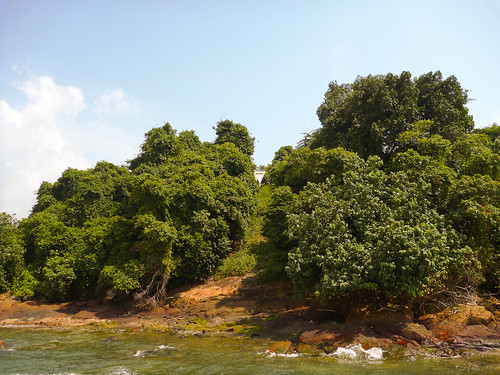
We had a good look at a pair of collared kingfisher (Todiramphus chloris), and while I only had a fleeting glimpse of a straw-headed bulbul (Pycnonotus zeylanicus), its melodious singing was regularly heard. Another bird that we heard more often than we saw was the red junglefowl (Gallus gallus); we'd seen a trio of roosters from the van while en route to Chek Jawa, but otherwise they chose to remain hidden in the vegetation while crowing away.
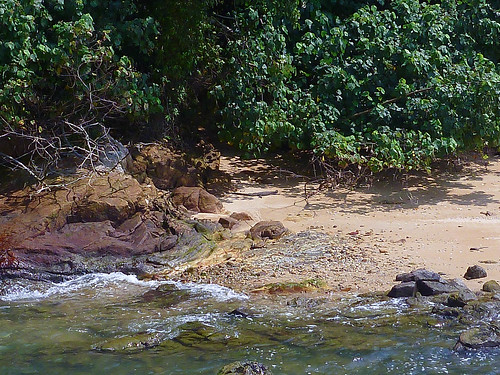
One of the sharp-eyed visitors spotted a Malayan water monitor (Varanus salvator) basking on the shore.
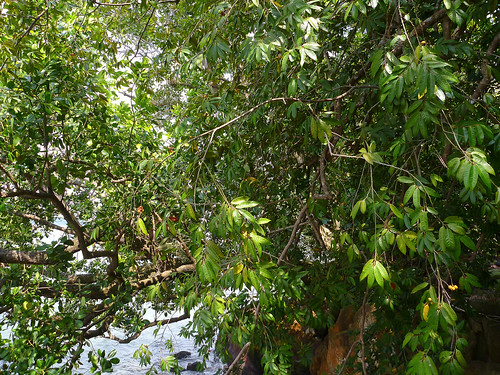
The seashore nutmeg (Knema globularia) was fruiting. These fruits are eaten by many birds, including hornbills.
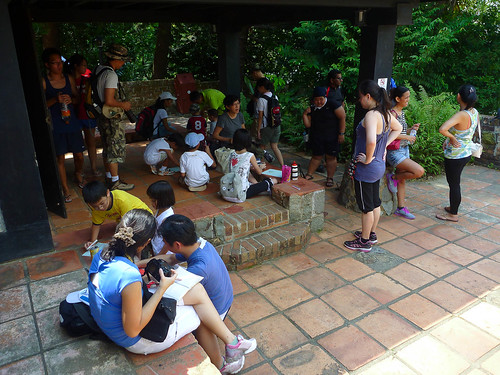
Everyone gathered at House No. 1 for the usual guestbook activities.
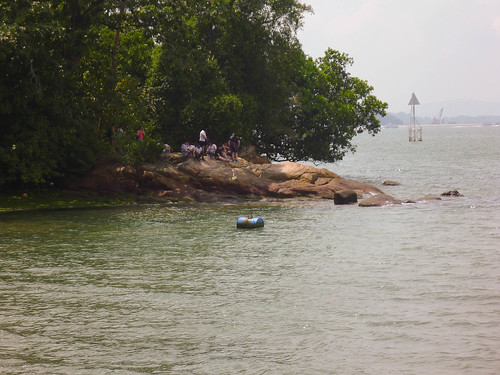
From the Viewing Jetty, I saw this metal drum with a flag floating in the water. I wonder where it came from.
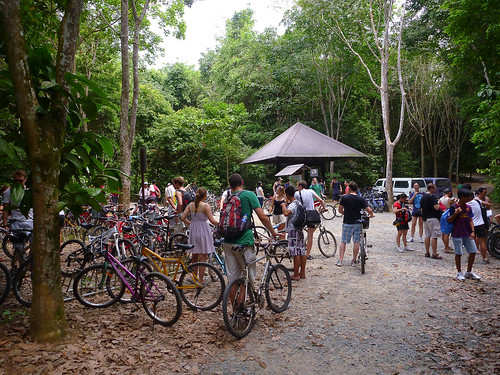
As we left Chek Jawa, we saw that a huge crowd had gathered. There are plenty of people who do appreciate our nature areas!

We had lunch at Ubin Town, where we learnt that Blackie the dog had recently passed away. I never really interacted with him, but often saw him hanging around Ubin Town. And now I miss Cookie and Max, who used to lounge around the Chek Jawa Information Kiosk, during those early years of guiding on the boardwalk.
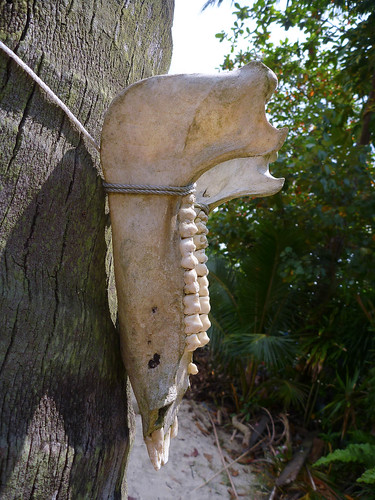
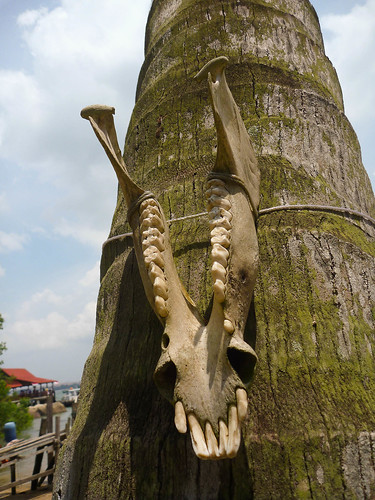
As we headed to the jetty to board the boat back to Changi, we found this mandible of a wild boar tied to a coconut tree.
A grey heron (Ardea cinerea) took flight close to the jetty, and as the boat approached Changi, Ria and I saw a black-naped tern (Sterna sumatrana) flying about, in search of fish. I'm starting to look forward to the coming months, when the flocks of winter migrants will return to their feeding and roosting grounds on many of our shores.
Our next guided walk at Chek Jawa will be on 8th September! Follow the Naked Hermit Crabs for more info.
Ria and Pei Yan also blogged about today's trip. Ley Kun also wrote a post on the Naked Hermit Crabs blog.